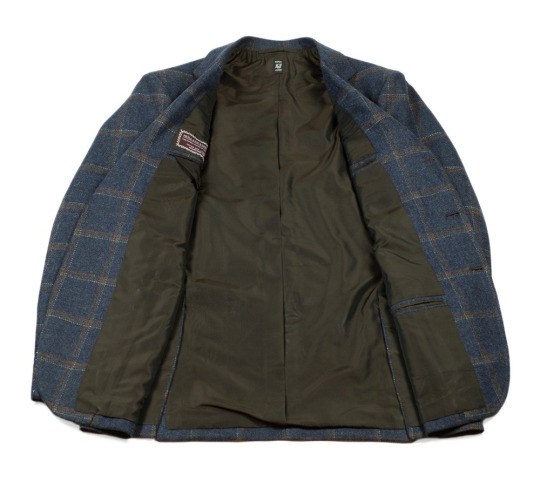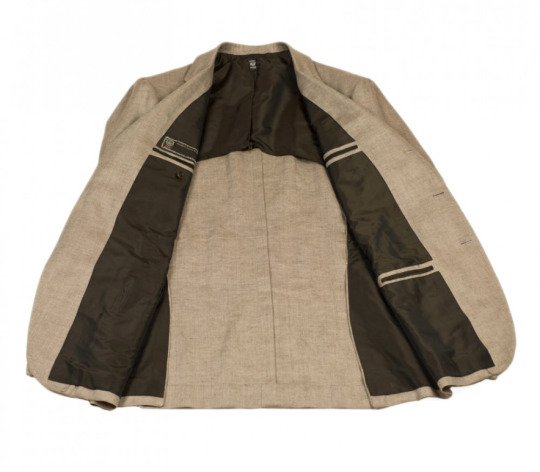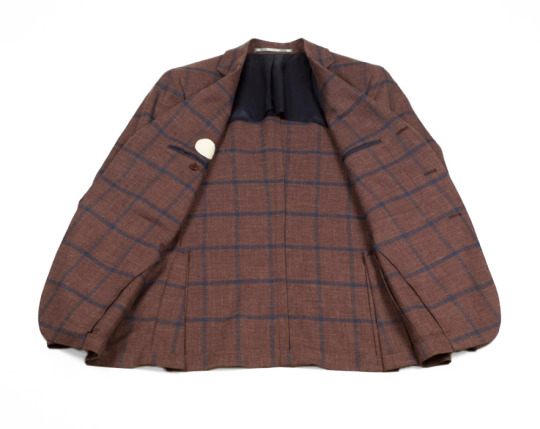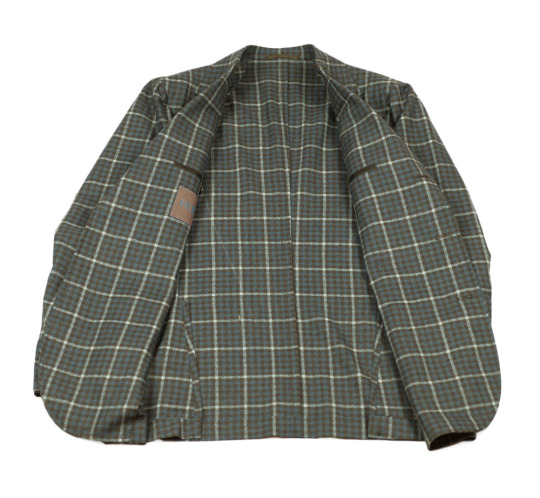
It can be hard to wear a tailored jacket in the warmer seasons. Even if it’s made from a loosely woven linen or lightweight tropical wool, a tailored jacket typically has multiple layers inside to give it structure – canvas, padding, haircloth, etc. The trick, of course, is to find something as softly tailored and lightly lined as possible. With fewer layers between you and that (hopefully) breathable shell, your body will dissipate heat better and you’ll in turn feel cooler.
None of that is six o’clock news to anyone who’s familiar with tailored clothing, but few people think about the different ways to make a jacket breathable. For one, Ermazine allows for better ventilation than Bemberg (which in turn allows for better ventilation than silk). The first is a lightweight viscose; the second a soft rayon. Most tailors rely on Bemberg because it’s durable, inexpensive, and readily available, but Ermazine can sometimes be had upon request.
Then there are the different ways to construct an unlined jacket – some of which are better suited to certain materials than others. Below are some jackets from No Man Walks Alone, which nicely illustrate these techniques.

Half-Lined Jackets: The most basic form of an unlined jacket. Here, the lining extends across the upper back and down the sides. It’s taken out of the lower back, however, in order to promote airflow.
Note, some tailors call this “buggy lined,” although I’ve also seen that term used for the other two styles below. Edwin at Steed tells me he doesn’t think the term “buggy lined” is very standardized, so it’s best to be clear with your tailor.
Pictured above: Formosa tan herringbone sport coat.

Quarter-Lined Jackets: A bit less lined than a half-lined jacket, such that the lining goes across the shoulders, but not down the sides. To get the most out of this style, consider asking for patched pockets. Welted ones will either leave exposed pocket bags or require a bit more material to give the bags support, which somewhat of defeats the purpose of a half-lined construction.
Pictured above: Burgundy Cantarelli sport coat

Fully-Unlined Jackets: Finally, there are fully-unlined jackets, which do away with even more material, if not all of it. If the interior raw seams have been taped with lining, the jacket is said to have a skeleton-lined construction; if they’ve been neatly folded and stitched, the jacket is truly unlined. Either way, you’ll typically find lining at least in the sleeves – which is a good thing. As anyone who has experienced a basted fitting can tell you: unlined jackets can catch on your shirt, so lined sleeves allow you to slip in and out your jacket more easily.
You may think that less lining means better breathability, but things aren’t always that simple. Half- and fully-unlined jackets often have a double layer of cloth inside (wool, cotton, linen, or whatever the jacket’s made out of). This material attaches to the mid-underarm and angles down toward the hem, allowing the fronts to have a bit more structure and giving the interior some pocket space. That extra layer might not be a big deal with certain materials, but on others, you may get better air circulation if you just go with a half-lining.
Personally, when the sun is beating down, I’ll take a jacket that’s been quarter-lined with Ermazine. It won’t turn 90 degree weather into 70, but if you have to wear a tailored jacket on a hot day, you might as well make it bearable.
Pictured above: Eidos shepherds check sport coat
